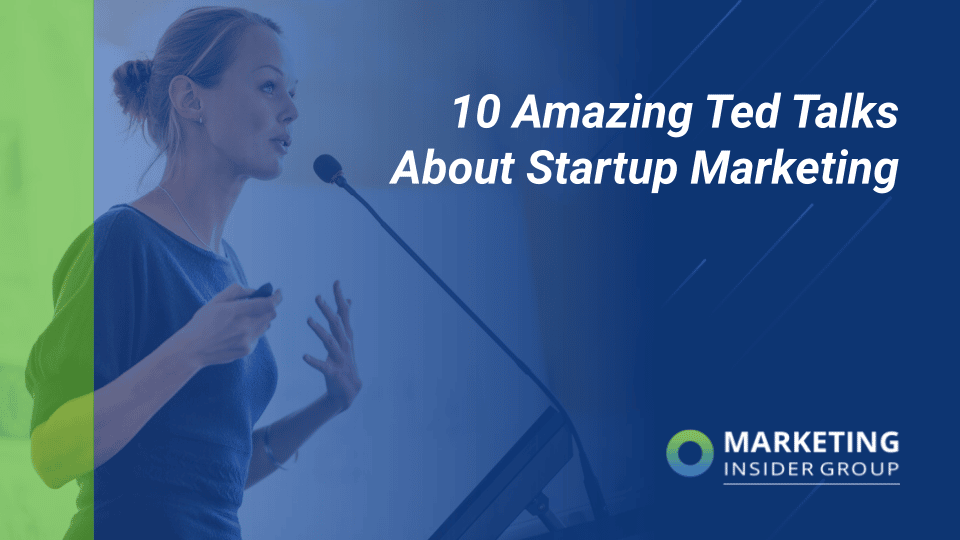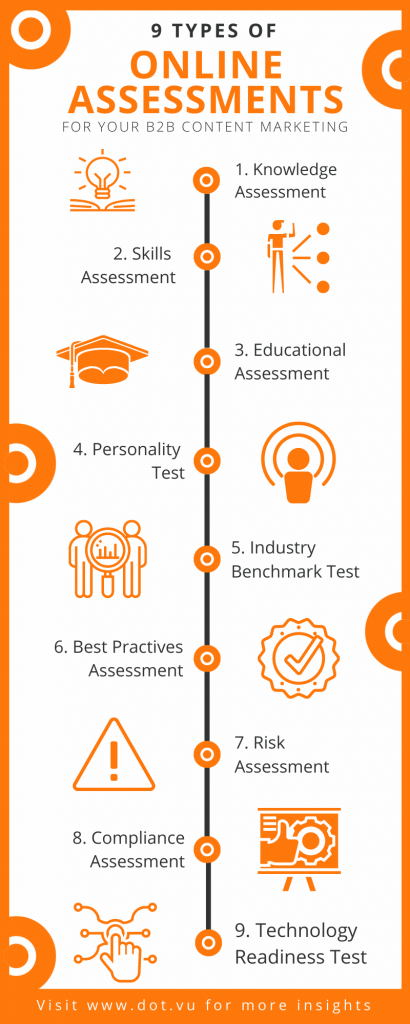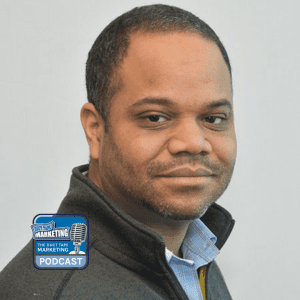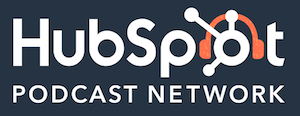
Over the years, Nobel Prize winners and thought leaders, like Elon Musk, Jane Goodall, and Larry Page, have shared their own expertise to spark new ideas in both aspiring and seasoned entrepreneurs.
Although it’s impossible to prepare yourself for every unexpected roadblock ahead, you can gain advice from the most influential entrepreneurs to give your new business its best shot at success. That’s why today, we’re sharing 10 of our favorite inspirational TED talks about startup marketing.
If you’re already an industry expert, you may be familiar with some of the wisdom discussed in each video – but you’re also sure to gain insights that will inspire new perspectives. These 10 TED talks about startup marketing and entrepreneurship serve as education and inspiration to help you overcome industry challenges and achieve success.
Quick Takeaways
- The right timing can increase your chances of success by up to 42%
- The key to startup marketing success is finding the courage to be vulnerable and confident in personal value
- To overcome challenges associated with entrepreneurship and startup marketing, you need to align your behavior with the road to success
- Build business around the idea that there is never just one correct answer or solution
These inspiring ideas shared by experts in entrepreneurship and startup marketing could be the key to taking your business to the next level.
10 Amazing Startup Marketing Ted Talks
Need a little inspiration? We’ve got you covered. Here’s 10 of the best startup marketing TED talks for entrepreneurs.
1. How Great Leaders Inspire Action
Simon Sinek
Video Source: TED
Bestselling author, Simon Sinek, believes that the greatest leaders are motivated by a clear sense of purpose, or “why”. He believes that with a clear sense of purpose, great leaders can inspire others to follow in their footsteps.
In his TED talk, Sinek explains his “Golden Circle” theory in-depth, and clarifies how great leaders and organizations have the ability to inspire others and model excellent leadership.
2. The Secret of How to Think Like an Entrepreneur
Amy Wilkinson
Video Source: TEDx Talks
After interviewing over 200 expert entrepreneurs, Amy Wilkinson learned a lot about how actionable skills can guide anyone to think like a successful entrepreneur. In her TED talk, Amy introduces the “OODA Loop”, revealing why it’s important to diversify your team’s perspective, fail wisely, and “gift small goods.”
3. How to Get Your Ideas to Spread
Seth Godin
Video Source: TED
If no one knows about your products or services, it doesn’t matter how great they are. If your startup marketing isn’t on point, all of your effort can go to waste, even if you have the right business idea. In this TED talk, marketing expert, Seth Godin, shares how you can effectively inform your audience about your ideas.
4. The Single Biggest Reason Why Startups Succeed
Bill Gross
Video Source: TED
As a well-seasoned entrepreneur and startup marketing guru, Bill Gross has seen many great business ideas fail, and questionable ones succeed. His vast experience in the industry inspired him to figure out why this happens.
Gross set out on a mission to evaluate hundreds of companies through qualifying factors, like:
- Idea
- Timing
- Team
- Capital
- Business model
In doing so, he found that timing was the most influential factor, accounting for about 42% of the difference between failure and success. In his TED talk, Gross goes in-depth on why you have to consider timing before bringing a new business idea to life.
5. Choice, Happiness, and Spaghetti Sauce
Malcolm Gladwell
Video Source: TED
Renowned author of several New York Times Bestsellers, Malcolm Gladwell, offers a unique and powerful life lesson in his inspiring TED talk. Gladwell shares research that proves there is rarely just one correct answer, introducing the significance of considering diversity in what’s “right” – and the importance of building both your life and business around this concept.
6. 3 Questions to Ask Yourself About Everything You Do
Stacey Abrams
Video Source: TED
Stacey Abrams is an American politician, lawyer, and author who served in the Georgia House of Representatives for 10 years. Through her expansive experience with both successes and setbacks, she learned a little something about the power of being aggressive about your ambition.
In her inspirational TED talk, Abrams shares the lessons she learned over the years and advice on how to change the world.
7. The Power of Vulnerability
Brené Brown
Video Source: TED
Through many years of research, Brené Brown found that the courage to be vulnerable and confidence in personal value are the keys to being both happy and successful. As a professor, lecturer, author, researcher, and podcast host, Brown brings her vast experience and valid reasoning to the table in her TED talk, The Power of Vulnerability.
Incredibly inspiring and educational, you can learn more about Brené Brown’s work in her book, Daring Greatly.
8. How to Motivate Yourself to Change Your Behavior
Tali Sharot
Video Source: TEDx Talks
As a neuroscientist, Tali Sharot knows a thing or two about how your brain works. She also knows that if you really want to start a successful business, you need to master your behavior.
In order to overcome challenges associated with entrepreneurship and startup marketing, your behaviors need to align with the road to success. In her TED talk, Sharot offers physiological and motivational insight on how to initiate positive change.
9. How to Run a Company with Almost No Rules
Ricardo Semler
Video Source: TED
Ricardo Selmer’s experience with startup marketing success makes listening to his TED talk well worth it. His revolutionary point of view suggests that redefining your employees’ working lives and granting them the freedom to live happily is the key to running a profitable business. Watch Selmer’s TED to learn how putting your employees first will help you achieve success.
10. Don’t Fail Fast – Fail Mindfully
Leticia Gasca
Video Source: TED
In Leticia Gasca Don’t Fail Fast – Fail Mindfully TED talk, she offers entrepreneurs a new perspective and helpful framework to learning from and overcoming failure. She explains that failure isn’t an alternative to success, but a pit-stop on your journey there – and that how you deal with failure is far more important than the fact that you experienced it.
Perfect Your Startup Marketing Today
Every startup marketing expert has to start somewhere. With these amazing 10 TED talks about startup marketing, you can find motivation and inspiration that points your business in the direction towards success.
Need a bit more where that came from? At Marketing Insider Group, we love to share our expert-level marketing tips and tricks to teach business owners like you how to overcome industry challenges. Learn more about great startup marketing skills today by checking out our weekly blog content service, or schedule a free consultation now!
The post 10 Amazing Ted Talks About Startup Marketing appeared first on Marketing Insider Group.
Did you miss our previous article…
https://www.sydneysocialmediaservices.com/?p=5478







 In this episode of the Duct Tape Marketing Podcast, I interview Dale Bertrand. Dale has been an SEO specialist for fortune 500 companies and venture-backed startups around the world for two decades. He speaks at industry conferences, leads, corporate training events, and serves as entrepreneur in residence at the Harvard Alumni Entrepreneurs Organization.
In this episode of the Duct Tape Marketing Podcast, I interview Dale Bertrand. Dale has been an SEO specialist for fortune 500 companies and venture-backed startups around the world for two decades. He speaks at industry conferences, leads, corporate training events, and serves as entrepreneur in residence at the Harvard Alumni Entrepreneurs Organization.
